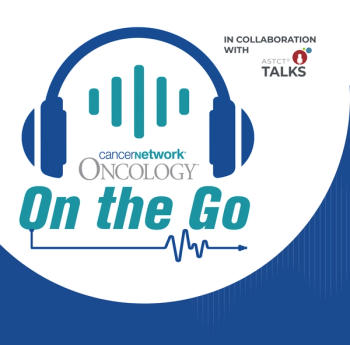
Blinatumomab/Chemo Shows High-Level Efficacy in Infant Leukemia Subtype
Adding blinatumomab to Interfant-06 chemotherapy appears to be feasible and safe in the treatment infants with acute lymphoblastic leukemia in a phase 2 trial.
Blinatumomab (Blincyto) in combination with chemotherapy yielded positive high-level efficacy and was well tolerated in the treatment of patients with KMT2A-rearranged infant acute lymphoblastic leukemia (ALL), according to findings from a phase 2 study published in The New England Journal of Medicine.
With a median follow-up of 26.3 months (range, 3.9-48.2), the 2-year disease-free survival (DFS) rate was 81.6% (95% CI, 60.8%-92.0%), and the 2-year overall survival (OS) rate was 93.3% (95% CI, 75.9%-98.3%). In the population of control patients who enrolled in the Inferant-06 trial and met the eligibility criteria for the current study, the 2 -year DFS rate was 49.4% (95% CI, 42.5%-56.0%; Hazard ratio [HR], 0.22; 95% CI, 0.09-0.34) and the 2-year OS rate was 65.8% (95% CI, 58.9%-71.8%; HR, 0.15; 95% CI, 0.04-0.62).
There was 1 death during first remission before receipt of hematopoietic stem cell transplant (HSCT), which investigators considered to be unrelated to blinatumomab. Additionally, there were 4 relapses, including in 2 medium-risk patients with a combined bone marrow/central nervous system (CNS) relapse during maintenance, 1 medium-risk patient with a CNS relapse during protocol chemotherapy, and 1 high-risk patient with a combined bone marrow/CNS relapse 2 months following HSCT.
“In this study, adding blinatumomab to the standard chemotherapy backbone in infants with newly diagnosed KMT2A-rearranged ALL was feasible and appeared to be safe,” the study authors stated. “These outcome data are very promising, given the poor survival and lack of improvements in outcomes among infants with KMT2A-rearranged ALL in recent decades.”
Investigators of the prospective, single-group, multi-center phase 2 trial assessed the safety and efficacy of the bispecific T-cell engager blinatumomab in infants with newly diagnosed KMT2A-rearranged ALL. Following 1 month of the same chemotherapy regimen used in the Interfant-06 study, patients received 1 cycle of blinatumomab at 15 μg/m2 of body-surface area per day as a 4-week continuous infusion.
The primary end point was incidence of any toxic effect that was related to blinatumomab resulting in permanent treatment discontinuation or death. Secondary safety end points included serious adverse effects (SAEs) and the percentage of patients who received a full 4-week course of treatment. Secondary efficacy end points included minimal residual disease (MRD) response and outcome data as compared with historical control data from the Interfant-06 study.
Patients younger than 1 year who received treatment according to the Interfant-06 protocol with less than 25% leukemic blasts in the bone marrow were eligible for participation in the study. Patients with a clinically relevant CNS condition requiring treatment and evidence of CNS involvement at the end of induction were unsuitable to participate in the study.
Investigators included a total of 30 patients and noted no significant differences in baseline characteristics between the study population and selected Interfant-06 historical controls. Although there were no study withdrawals, 5 patients had deviations from protocol-prescribed therapy.
After blinatumomab infusion, 93% of patients were MRD-negative or had low levels of MRD compared with 83% of the patients in the Interfant-06 trial (P = .26) Additionally, 78% of high-risk patients and 92% of those with high levels of MRD at the end of induction became MRD negative or had low levels of MRD following blinatumomab infusion.
Investigators did not observe any toxic effects that they could possibly or definitely be attributed to blinatumomab that yielded permanent treatment discontinuation or death. All patients received a full 4-week infusion of blinatumomab. Additionally, 1 patient experienced a treatment interruption due to a hypertensive crisis but eventually resumed treatment at 15 μg/m2 per day without additional complications.
There were 10 SAEs that occurred in 9 patients, including 4 instances of grade 1 fever, 4 instances of grade 3 or 4 infection, 1 instance of grade 3 hypertension, and 1 instance of grade 3 vomiting. Additionally, there were no fatal AEs or neurologic events.
The most common grade 3 or higher AEs included febrile neutropenia (7%), anemia (17%), and neutropenia (7%). The most frequent grade 1/2 AEs included hypertension (13%), vomiting (13%), and diarrhea (13%).
Reference
Van der Sluis IM, de Lorenzo P, Kotecha RS, et al. Blinatumomab added to chemotherapy in infant lymphoblastic leukemia. N Engl J Med. 2023;388:1572-1581. doi:10.1056/NEJMoa2214171
Newsletter
Stay up to date on recent advances in the multidisciplinary approach to cancer.





